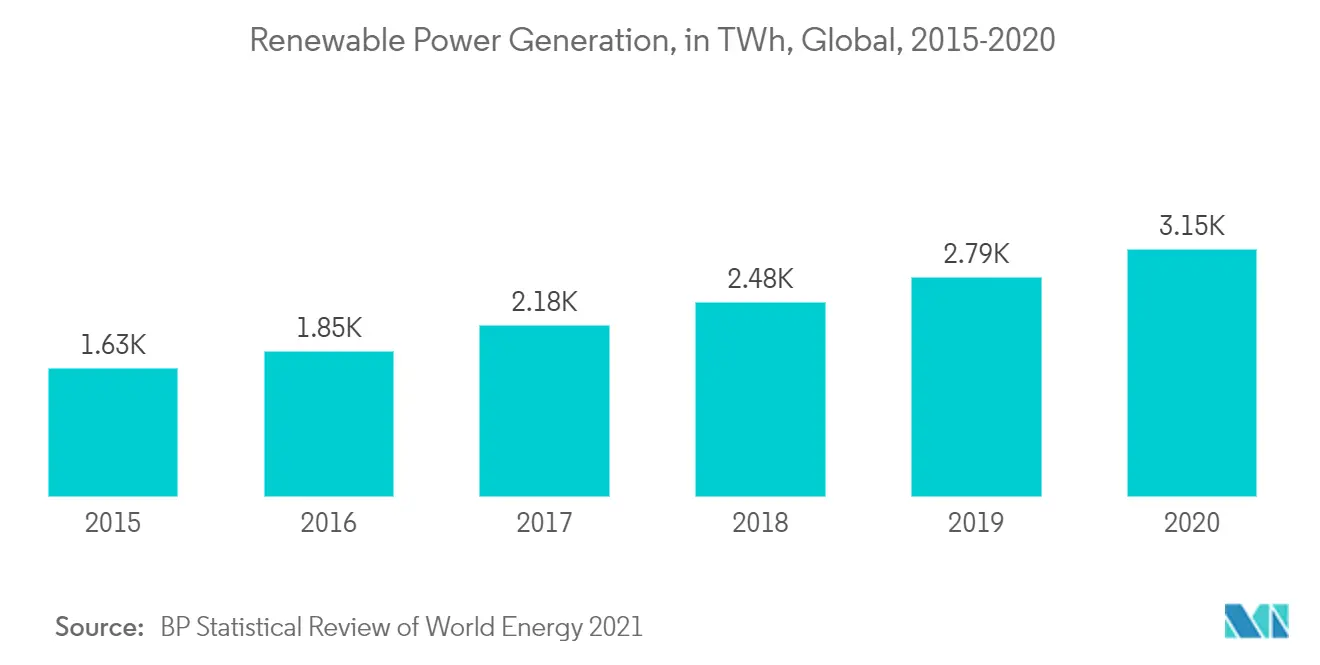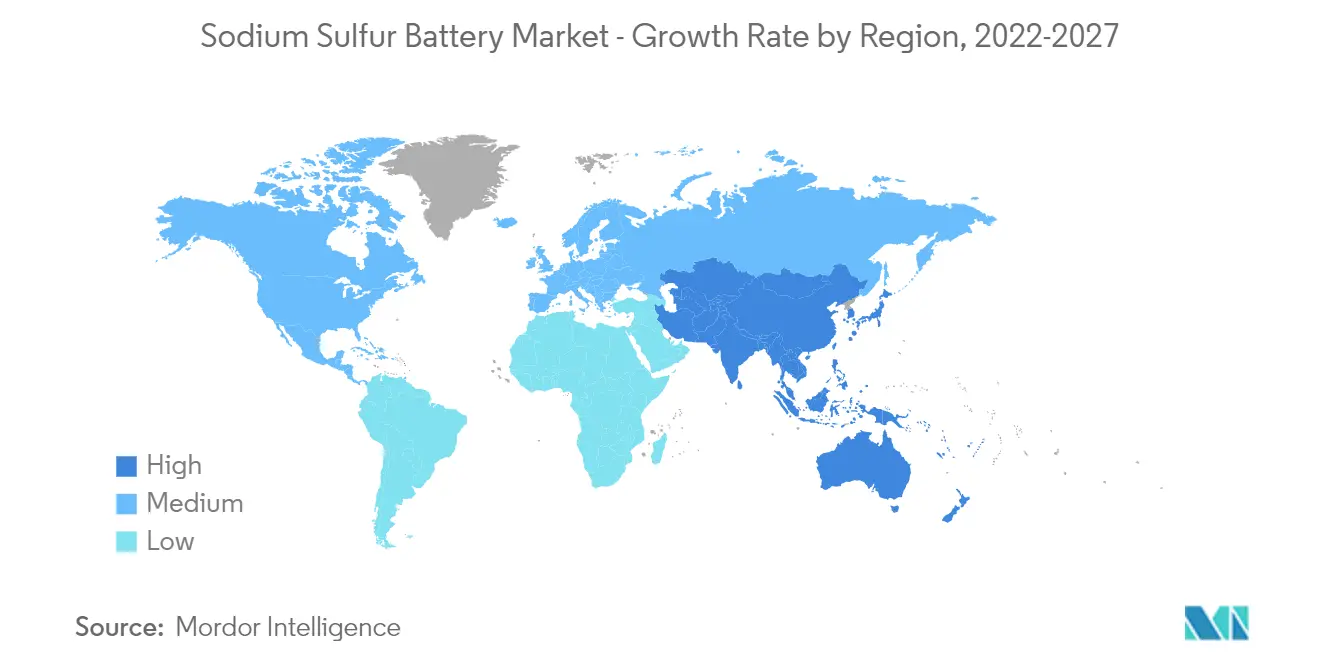Market Trends of Sodium Sulfur Battery Industry
This section covers the major market trends shaping the Sodium Sulfur Battery Market according to our research experts:
Renewable Energy Stabilization Expected to Witness Significant Growth
- Due to the intermittent nature of renewable power supply, the power producers have started the adoption of energy storage systems, along with renewable power installations. The sodium-sulfur batteries are high-temperature products that are highly suitable for grid-scale applications. Thus, many companies have begun the usage of NAS batteries in renewable plus energy storage systems.
- According to the BP Statistical Review of World Energy, renewable power generation stood at 3147TWh in 2020, which was an uptrend from the 2019 figures, which was around 2789.2TWh. In recent years, the power generation industry has witnessed umpteen number of renewable projects complemented with energy storage systems. Many projects are still on the way to getting added to the national grid of many countries, equipped with sodium sulfur battery systems.
- As an example, in 2021, JGC Holdings contracted NGK Insulators to supply NAS batteries for its solar plus storage project, which is currently being developed in Mongolia's Zavkhan Province. The 5 MW/3.6 MWh solar-plus-storage project is expected to be operational by 2022.
- Furthermore, the battery has recently carved out its utility in a hydrogen production project. In September 2020, BASF New Business (BNB) announced plans to supply NGK made NAS batteries for the wind power-based power-to-gas projects to be developed by G-Philos in the coming years. The MoU signed between G-Philos and BNB to co-operate in P2G projects around the world initially covers the supply of up to 19.2MWh of NAS batteries up to 2022. The stored energy in the batteries will be utilized for hydrogen production.
- Owing to such developments, the renewable energy stabilization segment is expected to grow at the fastest rate during the forecast period.

Asia-Pacific Expected to Dominate the Market
- The Asia-Pacific region is well-known for its highly developed battery manufacturing market. The shifting momentum toward renewable energy generation sources and the government support for it is the most compelling factors for the high deployment of battery energy storage systems, either in combination with renewable power projects (like wind, solar, etc.) or standalone energy storage projects.
- Countries like China, India, and Japan have witnessed an upsurge in renewable plus energy storage projects to the greatest extent. In 2020, the energy storage capacity additions in China were more than double as compared to the previous year. China has announced plans to install over 30GW of energy storage systems by 2025. Thus, many projects are queued up in the country to reach the goal.
- Furthermore, in April 2021, Japan's Ena city announced plans to install renewable plus energy storage projects for the city grid. The renewable power generator, Aichi Prefecture, has entered an agreement with NGK Insulators to purchase NAS batteries for ground-mounted and rooftop solar power installations coming online in the city in 2022.
- In India, too, the initiatives taken by the government in the field of energy storage are expected to give an impetus to the NAS battery market. India's stationary storage market is in the continuous growth phase. Around 25GWh of batteries were installed in 2020 across front-of-the-meter and behind-the-meter applications. The front-of-the-meter energy storage market stood at around 28MW/20MWh as of 2021 and is at a nascent stage, whereas the behind-the-meter applications are expected to have a major share in the future, around 30GWh by 2037.
- Such developments are expected to give a thrust to the regional market of NAS batteries in the near future.


